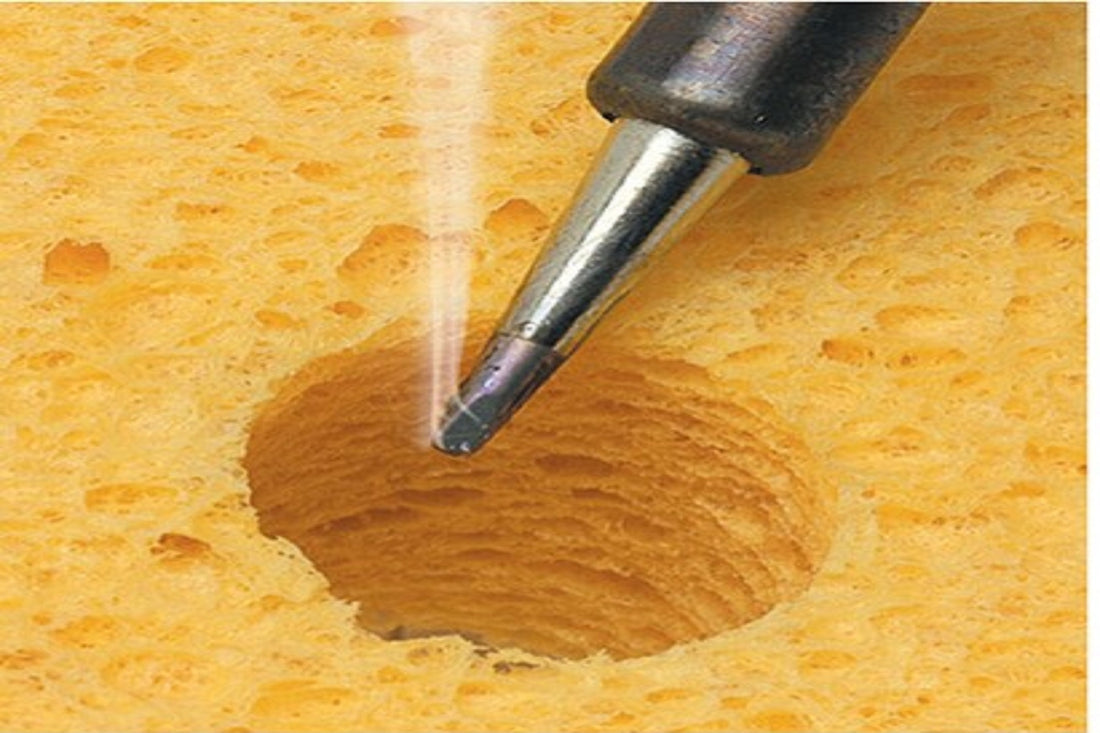The soldering iron tip is one of the key components of the soldering iron that helps achieve successful solder joints. Therefore, you want to keep the tip maintained and intact. The best way to maintain and care for your soldering iron tip to keep it performing properly is to re-tin the tips.
Tinning the tips is simply just covering the tip of the iron with a layer of solder. If the tip eventually develops a hole or a crack, the tip will disintegrate quickly. Tinning the tip will help prevent disintegration as well as to allow the solder to melt and even flow much more smoothly.
In fact, re-tinning your soldering iron tip should take place not only during your soldering session but before and after as well.
Below are just a few reasons why re-tinning your tips is important:
Re-tinning will help to extend the lifespan of the soldering iron tip
By regularly re-tinning your soldering iron tip, it can significantly extend its lifespan. By removing oxidation and residues, re-tinning helps prevent corrosion of the plating layer below which leads to disintegration. A well-maintained tip can last longer, which will reduce the frequency of tip replacements and save you time and money in the long run.
Re-tinning enhances the performance of the soldering iron tip
The soldering iron tip plays a vital role in the soldering process. Its ability to efficiently transfer heat to the components and the solder joint directly affects the quality of the connection. Over time, oxidation, and the accumulation of residues from soldering can degrade the tip's performance. Re-tinning helps to remove these contaminants, ensuring optimal heat transfer and preventing potential soldering issues.
Re-tinning also helps to prevent oxidation
The soldering iron tip can become damaged from oxidation. When exposed to air, the tip quickly forms an oxide layer that hampers its ability to conduct heat properly. This can lead to poor heat transfer, longer soldering times, and even cold solder joints. Re-tinning involves applying a thin layer of fresh solder to the tip, creating a protective barrier against the oxidation of the tip and helps to preserve the tip’s efficiency.
How To Tin Your Tips
Re-tinning your soldering iron tip is a straightforward process that requires the following steps:
- Ensure the soldering iron is heated to the proper temperature for soldering.
- Wipe the tip using a slightly damp sponge or brass wire cleaner to remove any existing residues.
- Apply a small amount of solder to the cleaned tip while ensuring it is evenly distributed.
- Allow the solder to melt and coat the entire surface of the tip.
- Wipe off an excess solder using damp sponge or cleaning pad.
- Repeat the re-tinning process regularly when soldering to maintain tip performance.
When To Re-Tin Iron Tips
- Keep the working surface of the tip coated at all times.
- Re-tin (re-coat) regularly during soldering and more frequently when using lead-free.
- Add excess solder to the tip before putting the iron back in the holder or turning it off.
Re-tinning your soldering iron tips is a simple yet essential practice in soldering. By re-tinning, you can preserve the tip's performance, prevent oxidation, enhance soldering precision, and extend the tip's lifespan. Regular maintenance of your soldering iron tips will ultimately lead to improved soldering results, efficient work, and a longer-lasting tool.

